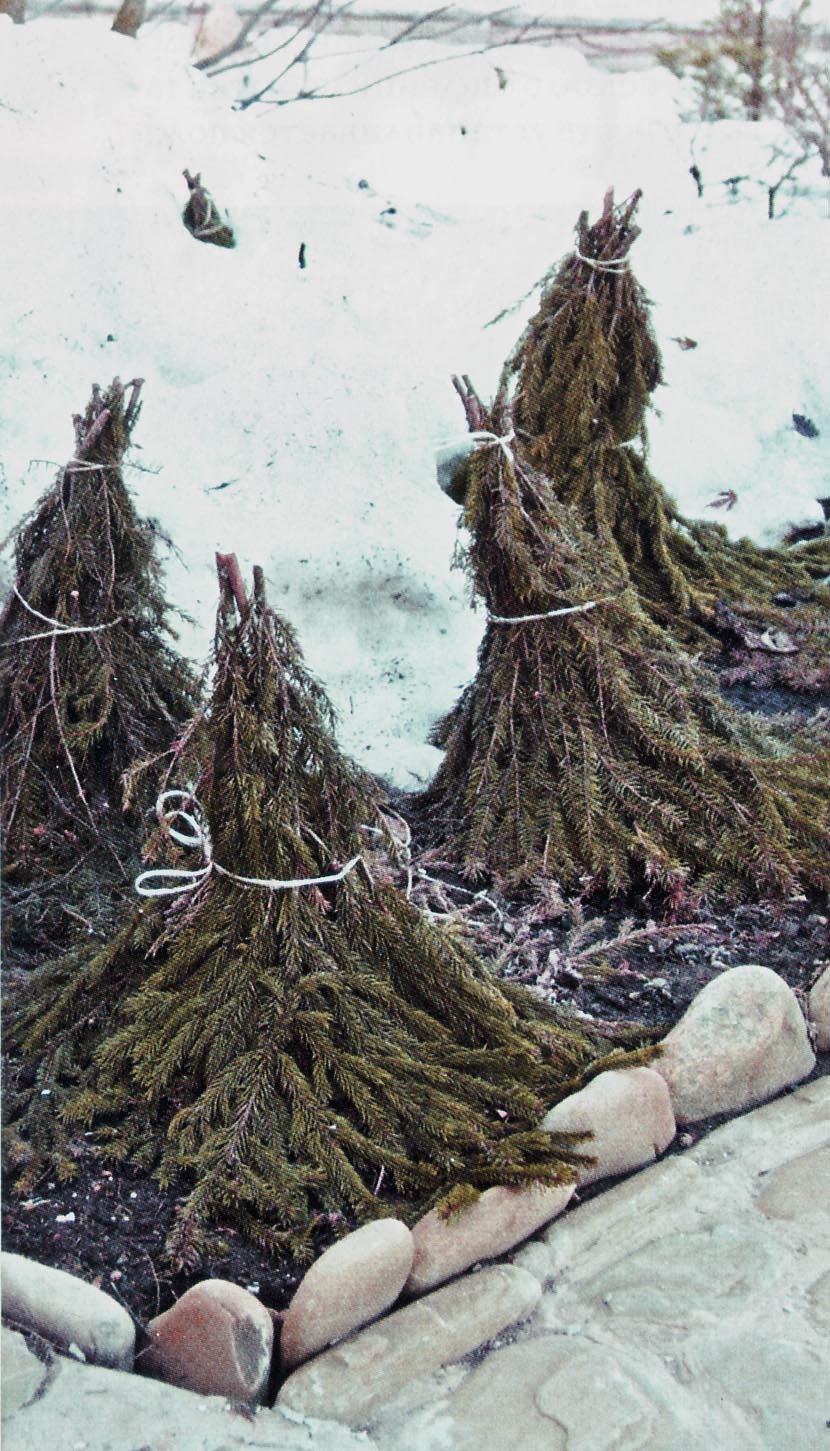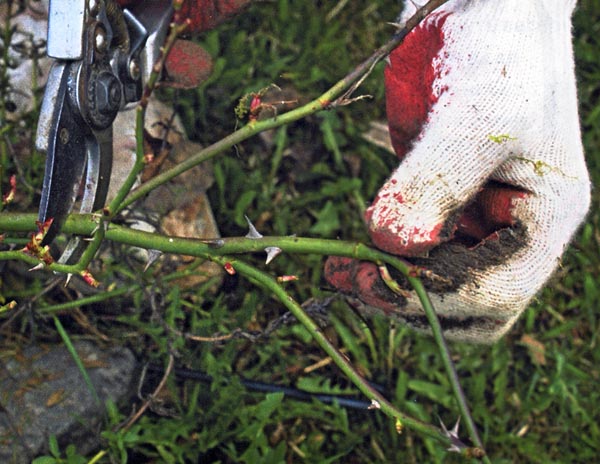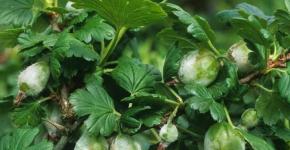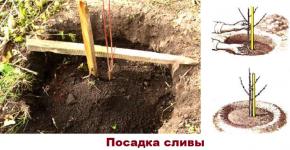When to remove shelters from plants in spring?
As soon as spring begins to smell in the air, I want to go out into the garden and do something useful, like clean up.
It hurts the eyes, not too aesthetic shelter under which the plants survived the winter. Hands reach out to get rid of them. How to "undress" the plants, so as not to make mistakes?
Alas, the universal recipe for gardeners does not exist. This is a risky business, a mistake can lead to the death of the plant. If you open early, the plants will freeze, if you are late, they will warm up. Much depends on the weather, the climatic features of your area and the microclimate of your site, the type of shelter, the types of sheltered plants.
So let's take a closer look at the material of the site question: When to remove shelters from plants in spring?
General rules
First of all, the strategy and tactics of getting rid of shelters depends on the purpose for which we covered the plants in late autumn. Shelters serve two different purposes, although often both at the same time - to protect against winter cold, sunburn and physiological desiccation.
So, we focus on the weather and proceed to “undress” the plants, when the night frosts weaken, the snow completely melts and a positive temperature is established. In the middle lane, this happens around the beginning - middle of April, the air temperature at this time is set at around 5 -10 ° C.
Removing shelters is a big stress for plants. To reduce it, we accustom the plants in advance to the fact that they will have to “walk” without clothes, we begin to harden them - to ventilate the shelters at a positive daytime air temperature, and in case of a cold snap we close again. Ventilation helps reduce humidity, but it will not replace drainage - if the plants are in a puddle, you will have to take a shovel and make grooves to drain melt water. Excess moisture is the main spring danger. Plants can die from dampness, and a humid environment is favorable for the development of infections.
Shelters are removed gradually, layer by layer, stretching the procedure for several days. It is better to choose a cloudy day without precipitation and wind, or to remove shelters from the plant in the evening - this way we will smooth out fluctuations in illumination, and it will be easier for plants to adapt.
For work, we need gloves (when working with roses, it is better to use special ones - dense ones), a wheelbarrow, a pitchfork, a rake (regular and fan). Some plants may need "first aid" - therefore, we keep pruners and garden pitch or similar compounds on hand. 
The sun
The dangerous period for evergreens is March and early April. At this time, the sun shines brightly in spring, and the snow reflects the sun's rays, many times increasing their negative impact. Most evergreens are not as afraid of frost as spring sunburn. Many conifers, rhododendrons, mahonia and evergreen perennials fall into this group. Properly chosen landing site (with natural shading from aggressive midday rays and competent agricultural technology significantly reduce the risk of damage.
It should be remembered that susceptibility to sunburn is highly dependent on the variety, often the most beautiful varieties are more vulnerable. Some species and varieties burn especially badly, for example, gray spruce (Picea glauca) "Conica". Sunburn is not always immediately noticeable - the plants are vigorous and green, and after a while their outfit acquires a characteristic grayish-brown color and begins to crumble. Wrapped plants receive little light, so you can not remove the shelter abruptly - the plants must rebuild the physiological processes, and this takes time. On the first day, we untie the top of the shelter, and then remove layer by layer (ideally one layer per day). Even when you have "stripped" the plants completely, make a screen on the south side for a few days to shade from the sun's rays in the middle of the day. With early removal of shelter, evergreens also suffer from physiological drought: the roots are in cold soil and are still sleeping, and the ground part warmed by the sun has already woken up and begun to evaporate moisture. To help the plants, we shade them and water them with warm water (about 50 ° C) so that the roots “earn”.
freezing
Roses, clematis and other heat-loving plants, most of which are unstable in a particular climatic zone, shelter from the winter cold. Roses suffer more from damp than from frost. Therefore, take care of the removal of excess melt water, and when a positive air temperature is established, ventilate the shelter, if necessary (if you have a framed air-dry shelter, open it from the ends).
After removing the shelter, it is necessary to shade the queen of flowers to avoid sunburn. We do not raise climbing and standard roses and clematis immediately, but when the soil finally thaws.
We rake the soil from the root neck at the very last turn, when the buds begin to swell (after about two weeks) - hilling will protect the root collar of roses in case of an unexpected return of cold weather. We do this very carefully so as not to damage the awakened kidneys - with a small hoe, a shovel, or just hands in tight gloves. At the same time, we carry out the final spring pruning.
Ambulance
 Immediately after the final removal of shelters, we carry out sanitary pruning of plants. Damaged shoots - frozen, propped up, eaten by rodents, affected
Immediately after the final removal of shelters, we carry out sanitary pruning of plants. Damaged shoots - frozen, propped up, eaten by rodents, affected
mushrooms, dry and broken - cut into a ring or kidney to healthy tissue (you can not cut in the middle of the internode - the area to the underlying kidney will still die and can become a breeding ground for infection). We burn the cut parts of plants. We cover thick sections and frost holes (cracks in the bark) with garden pitch or similar compounds.
Pruning clematis should be done with extreme caution - they have very fragile shoots. If you have not cut them since the fall or have forgotten what kind of pruning a particular variety needs, wait until the buds swell and remove all unnecessary.
It is also useful to carry out preventive treatment with fungicides, this is especially true for roses.
What to do
What to do next depends on the material of the shelter. Reusable shelters (burlap, kraft paper, straw mats, reed rugs, boxes, designer "houses") dry well in the sun and put away until autumn. Nonwoven materials (lutrasil, spunbond and their analogues) can be used to shade open plants and save them from recurrent frosts that can damage buds and young shoots.
The foliage that we used for shelter, most likely, has already begun to rot. So let it rot, but in a compost bin | treat it with bacterial preparations to speed up the process). Part of the foliage can be left near the plants, embedded in the soil. If you used the shoots of herbaceous plants for shelter, then we send them to the fire along with the bald spruce branches. In this case, do not forget about safety precautions - dry shoots are put into the fire in small portions - they instantly flare up and scatter even from a weak breeze. If you do not have a specially equipped fire pit, then it is good to adapt an old barrel for burning spring garbage, and use the resulting ash as fertilizer.
Output: - After reading the article, we hope you have received an answer to the question: When to remove shelters from plants in spring?


